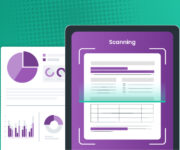In the rapidly growing and highly competitive digital credit market, efficient loan management software (LMS) is the lender’s most trusted tool. A dependable LMS automates, simplifies, and optimises lending organisations’ loan origination and servicing procedures.
To deliver productive end-to-end loan management capabilities, loan management software should seamlessly integrate with other systems, especially CRM and accounting applications. An LMS’s capability to integrate with this software significantly enhances its functionality and ensures the best utilisation of the LMS suite.
Customer relationship management (CRM) software, whereas accounting software handles all aspects of loan accounting and disbursement. These are inseparable components for any forward-thinking businesses and financial institutions.
This article explores the best practices for integrating loan management systems with CRM and accounting modules.
The Significance of Loan Management Software Integrations
An LMS should be a dynamic tool with the potential to be customised and scaled. It cannot remain a one-and-done use product due to several reasons, for example:
Evolving CRM Practices
CRM practices are rapidly changing, primarily due to evolving technologies. This calls for updated integration modules.
Accounting Process Modifications
Accounting procedures change in response to regulatory mandates. This necessitates integration with the LMS in place.
Data Silos Created by Dissociated Applications
Divergent and disjointed software leads to data silos that result in duplicate customer profiles or segmented, broken-down customer data.
This limits the loan management software’s ability to track customer relationships. A robust loan management software must accommodate such modifications and address emerging data issues.
In short, integrating accounting and CRM software with LMS enables the creation of flexible integrated workflows with universal access to critical information. Such integration capabilities of loan management software are essential for the success of digital lending.
4 Key Perks of Integrating Loan Management software With CRM and Accounting Applications
To properly integrate functioning programs, one must first understand the advantages of integration. Some critical benefits include:
1. Improved efficiency
Integration with loan management software streamlines business operations and enhances application functionality. Data updation takes place real-time, facilitating speedier decision-making. Integrated applications collectively gather more data without duplication and segmentation so users can leverage them in impactful ways.
For example, an EMI remittance is input into the accounting program, and the information is updated in the CRM simultaneously. Customers can instantly view the loan’s remittance status and revised outstanding sum in the CRM app.
As a result, data can be managed centrally, allowing for precise customer segmentation and personalised communication during the recovery process.
2. More accuracy and reliability of the information
Integrations with loan management systems ensure real-time synchronisation of customer and financial data across applications and keep the information up-to-date. Syncing data automatically improves accuracy and reduces the chance of users accessing outdated data.
3. Enhanced user experience for both employees and customers
According to a McKinsey report, operational and IT improvements with a customer focus can increase customer satisfaction by 20%-30% and employee satisfaction by 10%-20%. Connecting applications to a core program increases user convenience and experience.
Loan management software integration with accounting and CRM tools helps improve overall user experience by:
- Removing the tedious process of re-entering data across programs
- Dismantling information silos, eliminating the need to switch between applications to locate the necessary data.
- Allowing the staff to become more independent regarding information access. This helps them to collaborate to create more meaningful business objectives successfully.
- Enabling customer service representatives to quickly respond to customer queries using more accurate and real-time information.
- Providing customers with more personalised service using access to specific customer information.
4. Flexible and scalable solutions
Integrations provide more flexibility and customisation options according to a firm’s lending needs. The ability to customise a solution to fit the specific needs of the business is critical when planning for future growth.
Integrating CRM and Accounting Tools With Loan Management Software: 5 Strategies
Your finance and customer support teams may use suitable software for their operations. Nevertheless, these applications are not utilised to their fullest capacity unless they are correctly coupled with your loan management software.
The following list contains five best practices for integrating third-party software solutions into your LMS.
1. Establish your integration goals and develop a plan accordingly
Correctly identify what you try to achieve by integrating LMS with other modules. Some of the objectives might include:
2. Match the integration approach with your application scenario
Selecting the right integration method is the next step after determining the goals. Lenders must adopt an approach that aligns with their business requirements. It must-
a) offer quick and easy deployment option
b) be agile and able to adapt
c) support connection, coordination, as well as data migration requirement
d) easily accommodate future versions of the app, and
e) produce reports to track the success or failure of integration
3. Understand the technical considerations and functional needs
The next step follows the analysis and consideration of technical and functional requirements. This involves-
a) identifying applications/ modules to be integrated
b) syncing data across those applications and the loan management system
c) mapping metadata between application
d) designing integration rules to follow
e) managing connections and adapters
f) establishing governance across applications, etc.
4. List non-functional requirements
Non-functional criteria like availability, performance, security, dependability, and scalability are important.
5. Learn the phases of deployment
Integration deployment steps involve setting up the environment, testing, actual deployment, and establishing backup processes in place.
In Summary
The process of software integration is not static. It evolves in response to changes in corporate objectives or market adjustments. CRM and accounting tools you select for integration must be compatible with your present goals and flexible enough to accommodate future upgrades of the integrated modules.
When it comes to integration architectural models to select from, there are several methods available such as Application Programming Interfaces (APIs) integration platforms, middlewares, webhooks, Integration Platform as a Service (iPaaS), and so on.
Lending institutions must invest in a method that best augments the utility of their loan management software. Among the alternatives, the API integration platform is the fastest and the most customisable option.
Upgrade your legacy loan management system with Finezza’s Loan Origination and Loan Management Solutions. Our solutions are available via secure APIs and data pipelines and can easily integrate with your existing software.
Book a demo to know more.




Leave a Reply